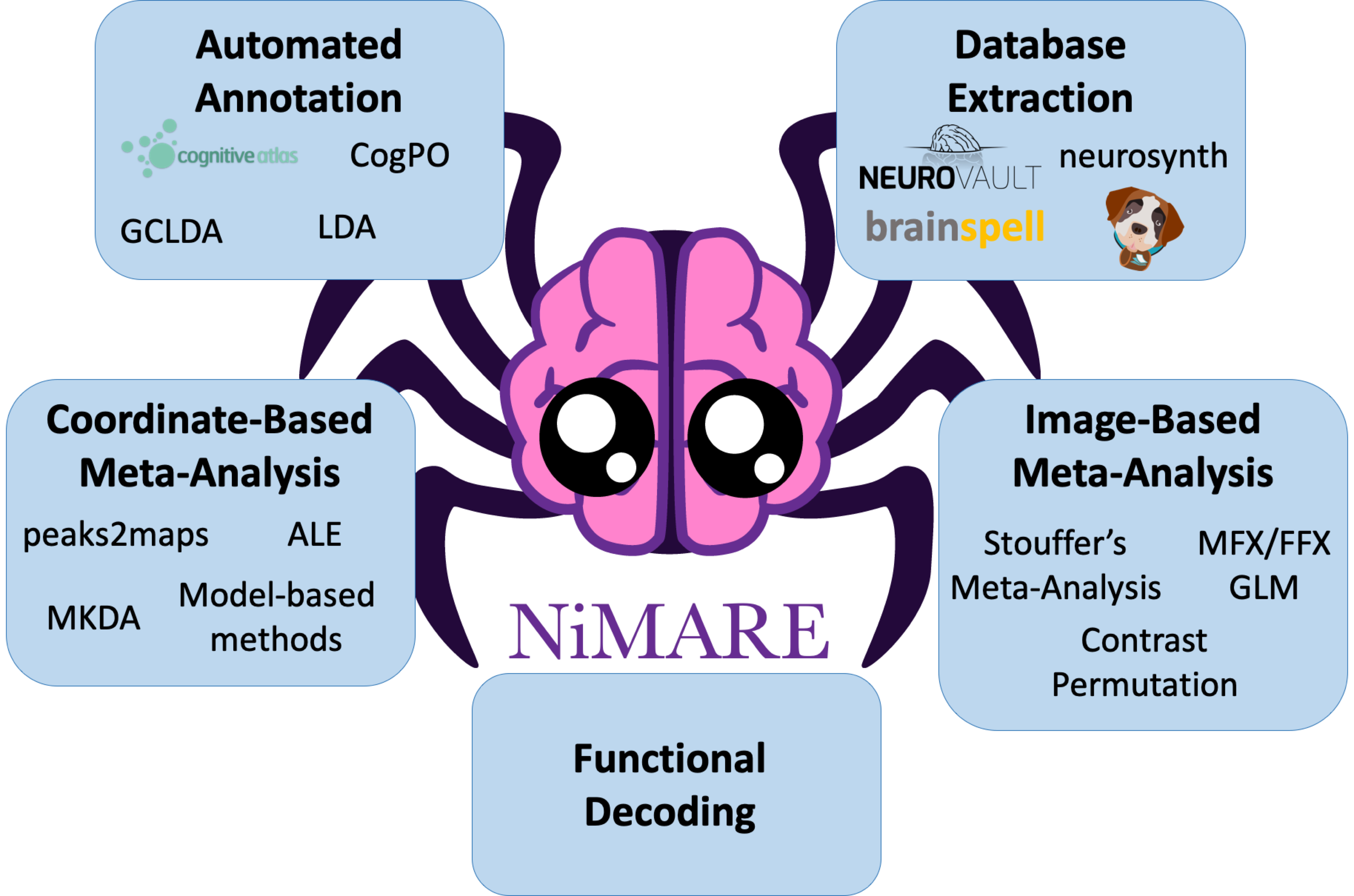Abstract
Abstract¶
We present NiMARE (Neuroimaging Meta-Analysis Research Environment), a Python library for neuroimaging meta-analyses and meta-analysis-related analyses. NiMARE is an open source, collaboratively-developed package that implements a range of meta-analytic algorithms, including coordinate- and image-based meta-analyses, automated annotation, functional decoding, and meta-analytic coactivation modeling. By consolidating meta-analytic methods under a common library and syntax, NiMARE makes it straightforward for users to employ the appropriate approach for a given analysis. In this paper, we describe NiMARE’s architecture and the methods implemented in the library. Additionally, we provide example code and results for each of the available tools in the library.
Fig. 1 A graphical representation of tools and methods implemented in NiMARE.
This diagram outlines six of the most common use-cases for NiMARE.
(A) Coordinate-Based Meta-Analysis (CBMA) is performed by creating a NiMARE Dataset with coordinate information stored in the Dataset.coordinates attribute, which is then used in a CBMA Estimator. This produces a MetaResult object with statistical maps, which can then be used in a Corrector object for multiple comparisons correction. Once the Corrector has been fitted, it will produce a corrected version of the MetaResult object, containing updated statistical maps.
(B) Image-Based Meta-Analysis (IBMA) operates similarly to CBMA, except that IBMA Estimators use statistical maps stored in the Dataset.images attribute.
(C) Meta-Analytic Coactivation Modeling (MACM) uses a region of interest to select coordinate-based studies within a Dataset, after which the standard CBMA workflow is performed.
(D) Automated Annotation infers labels from textual (and sometimes other) data associated with the Dataset, as stored in the Dataset.texts attribute. The annotation functions produce labels which may be integrated into the Dataset as the Dataset.annotations attribute.
(E) Functional decoding of continuous statistical maps operates similarly to discrete decoding, in that the input Dataset must have both coordinates and annotations attributes. The Dataset, along with an unthresholded statistical map to decode, is provided to the Decoder object, which then outputs measures of similarity or associativeness with each label.
(F) Functional decoding of discrete inputs applies a selection criterion to a Dataset with both coordinates and annotations attributes, using a Decoder object. The decoding algorithm will output measures of similarity or associativeness with each label in the annotations.¶
About NiMARE
Meta-Analytic Databases and Resources
Meta-Analyses in NiMARE
Other Meta-Analytic Approaches
Concluding Thoughts
Appendix
NeuroLibre
